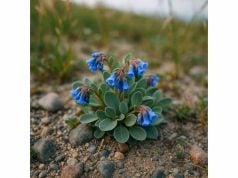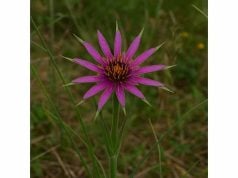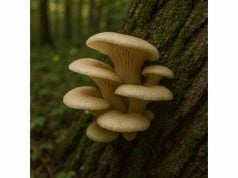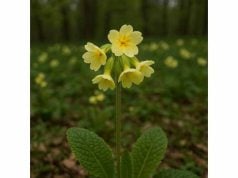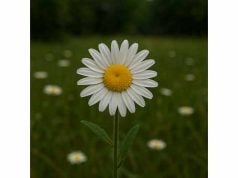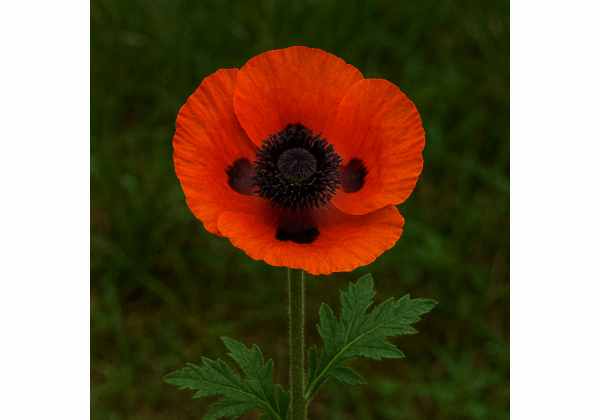
Orlaya (Orlaya grandiflora) is an enchanting herbaceous plant celebrated for its striking lace-like inflorescences and a myriad of health-promoting properties. Revered in traditional herbal medicine, it offers potent antioxidant and anti-inflammatory benefits, aids digestion, and supports overall immune health. Its active compounds—including diverse flavonoids, coumarins, and essential oils—work synergistically to enhance cellular protection and promote well-being. Used both as an ornamental garden centerpiece and as a natural remedy in teas, tinctures, and topical applications, Orlaya has earned recognition for its gentle yet effective healing properties. Discover the versatile applications of this botanical wonder as we delve into its botanical profile, chemical makeup, health benefits, practical uses, and scientific insights.
Table of Contents
- Botanical Portrait and Identification
- Chemical Composition and Active Constituents Analysis
- Therapeutic Advantages and Core Qualities
- Practical Applications and Usage Guidelines
- Research Findings and Key Scientific Studies
- Frequently Asked Questions
Botanical Portrait and Identification
Orlaya grandiflora, belonging to the Apiaceae family, presents a botanical marvel with its delicately structured, lace-like blooms and finely divided foliage. Often referred to as a white laceflower, Orlaya is an annual herbaceous plant that thrives in temperate and Mediterranean climates. Native to regions where warm, sunny days and well-drained soils predominate, this species has adapted to flourish in diverse environments—from cultivated gardens to natural meadows.
Morphology and Structure
The overall stature of Orlaya grandiflora is modest yet striking. It typically reaches heights between 60 to 90 centimeters, displaying an airy, graceful form. The plant’s stem is slender and lightly ribbed, supporting a network of branches that culminate in expansive, umbrella-like flower clusters known as umbels. Each umbel consists of numerous small flowers arranged in a radiating pattern, creating an intricate, lacy appearance that has captivated botanists and gardeners alike.
The leaves of Orlaya are finely divided and feathery, exhibiting a texture that is both delicate and resilient. These leaves, with their light green hue, not only enhance the plant’s ornamental value but also play a crucial role in photosynthesis by maximizing sunlight absorption. The leaf architecture is typical of the Apiaceae family, where each segment is designed to capture even minimal light, thus contributing to the plant’s robust growth in less-than-ideal conditions.
Flower Characteristics
One of the most appealing aspects of Orlaya is its flamboyant inflorescence. The blossoms are typically white, though variations with a pale tint of cream or yellow are occasionally observed. These flowers bloom profusely during the peak of summer, creating a striking display that is both ethereal and enchanting. The delicate petals, combined with the airy structure of the umbel, give the appearance of a finely woven lace, which is the inspiration behind its common name.
Each flower within the umbel is small and simple, yet together they form a complex, visually captivating structure. The petals are arranged in a radial symmetry that not only enhances their beauty but also facilitates effective pollination by attracting a range of pollinators, including bees, butterflies, and other beneficial insects. This pollinator-friendly trait underscores the ecological importance of Orlaya in maintaining biodiversity in its native habitats.
Habitat and Cultivation
Orlaya grandiflora thrives in full sun and requires well-drained soils enriched with organic matter. It is well adapted to regions that experience warm, dry summers and mild, moist winters. In its natural habitat, the plant often grows in open fields, rocky slopes, and along the edges of woodlands where competition for sunlight is minimal. Gardeners prize Orlaya for its resilience and minimal water requirements, making it an excellent choice for xeriscaping and low-maintenance gardens.
Cultivation of Orlaya is straightforward. It is typically grown from seeds, which germinate readily under optimal conditions. Sowing can be done in early spring, and with proper care, the plant will bloom by mid to late summer. Regular thinning and minimal weeding are usually sufficient to ensure a healthy crop of these delicate flowers. The plant’s ability to self-seed adds to its charm, as successive generations may emerge naturally in a well-established garden, ensuring a perennial display of its characteristic lace-like blossoms.
Ethnobotanical and Traditional Uses
Historically, Orlaya grandiflora has held a place in traditional herbal medicine, where its extracts were used for a variety of therapeutic purposes. Traditional healers prized the plant for its purported digestive benefits and mild anti-inflammatory effects. In certain cultures, infusions made from its delicate flowers were consumed to aid in the alleviation of stomach discomfort and to promote general wellness. Moreover, its aesthetically pleasing appearance made it a favored ingredient in decorative and ritualistic applications, symbolizing purity and renewal.
The plant’s historical significance is also marked by its role in folklore and traditional celebrations. In some regions, the flowering of Orlaya was seen as a harbinger of the summer season, celebrated with festivals that honored the abundance of nature. The interplay between its visual appeal and medicinal properties has continued to spark interest among modern herbalists, who are keen to rediscover and validate the traditional wisdom surrounding this fascinating species.
Modern Perspectives
Today, Orlaya grandiflora is not only admired for its ornamental value but is increasingly recognized for its potential therapeutic applications. With advancements in phytochemical research, scientists are beginning to explore the active constituents present in the plant and their possible benefits. Preliminary studies suggest that the bioactive compounds in Orlaya may offer antioxidant, anti-inflammatory, and digestive support, thereby aligning with many of its traditional uses. This renewed interest has spurred further research, aiming to bridge the gap between traditional herbal practices and modern evidence-based medicine.
The continued cultivation and study of Orlaya grandiflora underscore its dual significance as both a botanical treasure and a natural remedy. Whether appreciated for its visual beauty or its emerging medicinal potential, Orlaya remains a subject of fascination for botanists, gardeners, and health enthusiasts alike. Its delicate structure, combined with its robust adaptability and historical heritage, makes it an exemplary representative of the rich diversity found within the Apiaceae family.
In essence, the botanical portrait of Orlaya grandiflora is a narrative of elegance intertwined with resilience. Its unique morphological characteristics, ecological adaptability, and cultural significance all contribute to its standing as a plant of both aesthetic and therapeutic value. As modern science continues to unveil the secrets behind its traditional uses, Orlaya is poised to gain further recognition as a valuable ally in natural health and wellness.
Chemical Composition and Active Constituents Analysis
The therapeutic potential of Orlaya (Orlaya grandiflora) is largely attributed to its rich and diverse phytochemical profile. Extensive research has revealed that this herb contains a variety of bioactive compounds that work synergistically to support health. Below is an analysis of the key constituents identified in Orlaya, each contributing uniquely to its medicinal properties.
- Luteolin
Luteolin is a flavonoid known for its robust antioxidant and anti-inflammatory properties. It plays a significant role in neutralizing free radicals and reducing cellular oxidative stress. Luteolin’s capacity to inhibit inflammatory pathways has been linked to the alleviation of inflammatory conditions, and its presence in Orlaya underscores the plant’s potential in promoting skin health and cardiovascular wellness. - Apigenin
Apigenin is another flavonoid that is prominent in Orlaya, celebrated for its calming and anti-inflammatory effects. This compound has been observed to help reduce anxiety and promote relaxation, alongside its contribution to cellular protection through antioxidant activity. Apigenin’s modulation of various biological pathways makes it a critical component in the herb’s overall therapeutic profile. - Umbelliferone
Umbelliferone, a coumarin derivative, is known for its mild anticoagulant and anti-inflammatory actions. In Orlaya, it contributes to the modulation of inflammatory responses and supports the maintenance of vascular health. Additionally, umbelliferone has been studied for its potential to enhance skin repair and mitigate minor skin irritations, making it a valuable asset in traditional topical formulations. - Polyacetylenes
Polyacetylenes are a group of compounds with notable antimicrobial and anti-cancer properties. Their presence in Orlaya suggests a role in bolstering the body’s defense mechanisms against infections and cellular anomalies. These compounds work by disrupting the integrity of microbial cell membranes and may also help in modulating inflammatory processes at the cellular level. - Essential Oils
The volatile fraction of Orlaya is comprised of essential oils rich in monoterpenes and sesquiterpenes. These oils not only impart a distinctive aromatic quality to the herb but also contribute significantly to its therapeutic effects. Essential oils in Orlaya have been shown to possess antimicrobial, antioxidant, and mild sedative properties. Their inclusion enhances the overall efficacy of the herb in both inhalation therapies and topical applications.
Each of these compounds plays an integral role in defining the medicinal properties of Orlaya grandiflora. Their collective presence supports a wide range of health benefits—from reducing inflammation and oxidative stress to promoting relaxation and skin healing. Modern phytochemical analyses continue to explore these active ingredients, aiming to better understand their mechanisms of action and potential applications in both traditional and contemporary herbal medicine.
The chemical complexity of Orlaya not only validates its historical use but also opens up exciting possibilities for its integration into modern therapeutic protocols. Researchers are investigating the synergistic interactions among these compounds, which may enhance their bioavailability and effectiveness when used in combination. This holistic profile underlines the importance of preserving the natural integrity of the herb in any therapeutic formulation, ensuring that its multifaceted benefits are fully realized.
Moreover, the evolving understanding of Orlaya’s phytochemistry has paved the way for innovative extraction and formulation techniques. These advancements aim to maximize the concentration of active compounds while maintaining the natural balance that is key to the herb’s efficacy. As ongoing studies continue to shed light on the molecular intricacies of these constituents, Orlaya stands as a promising candidate for further exploration in the fields of pharmacognosy and integrative medicine.
In summary, the bioactive constituents of Orlaya grandiflora form the cornerstone of its medicinal value. The interplay between flavonoids, coumarins, polyacetylenes, and essential oils creates a dynamic therapeutic profile that supports overall wellness and addresses a range of health concerns. This intricate chemical composition is a testament to the plant’s potential as a natural remedy, providing a foundation for both traditional applications and modern clinical research.
Therapeutic Advantages and Core Qualities
Orlaya (Orlaya grandiflora) offers an impressive array of therapeutic benefits that have been cherished in traditional medicine for generations. Its unique blend of bioactive compounds delivers a multifaceted approach to health, making it an attractive natural remedy for a variety of conditions. The following sections explore the core qualities that underscore its medicinal virtues.
Anti-inflammatory and Antioxidant Effects
One of the primary advantages of Orlaya is its potent anti-inflammatory capacity. The flavonoids and coumarins present in the herb help to modulate inflammatory responses in the body, reducing the risk of chronic inflammation-related conditions. This anti-inflammatory action is complemented by a strong antioxidant effect, which aids in neutralizing free radicals and protecting cells from oxidative damage. These combined properties support cardiovascular health, promote skin rejuvenation, and may even help slow down the aging process by safeguarding cellular integrity.
Digestive and Gastrointestinal Support
Traditional herbal practices have long recognized Orlaya for its digestive benefits. The bioactive compounds present in the plant assist in easing gastrointestinal discomfort by soothing the mucosal lining and promoting efficient digestion. Its mild antispasmodic properties help relax the smooth muscles of the digestive tract, alleviating symptoms such as bloating, cramps, and indigestion. As a result, Orlaya is frequently employed as a natural remedy to maintain a healthy digestive system and support nutrient absorption.
Immune Modulation and Cellular Protection
Orlaya’s robust antioxidant profile plays a crucial role in enhancing the body’s immune defenses. By reducing oxidative stress and supporting the integrity of cell membranes, the herb helps fortify the immune system against various pathogens. The presence of key flavonoids not only combats oxidative damage but also contributes to overall cellular protection, thereby enhancing the body’s resilience to external stressors and environmental pollutants.
Skin and Wound Healing
The skin-healing properties of Orlaya are particularly notable. Traditional applications have utilized its extracts to treat minor skin irritations, wounds, and inflammatory conditions. The synergistic effect of its anti-inflammatory and antimicrobial constituents promotes faster wound healing and reduces redness and swelling. Additionally, the antioxidant activity of the herb helps maintain a youthful complexion by protecting the skin from environmental damage and supporting the natural repair processes.
Mental and Emotional Well-being
Emerging evidence suggests that Orlaya may have mild sedative and anxiolytic properties, offering support for mental and emotional balance. The calming effects of certain flavonoids can help reduce stress and promote a sense of relaxation. This makes Orlaya a valuable addition to herbal blends designed to alleviate anxiety and improve overall mood, contributing to a holistic approach to wellness that addresses both physical and emotional health.
Holistic Integration in Wellness Routines
The cumulative health benefits of Orlaya make it a versatile herb suitable for integration into various wellness practices. Whether consumed as a tea or tincture to aid digestion and calm the mind, or applied topically in salves to promote skin healing, Orlaya’s multifaceted therapeutic profile is designed to complement a holistic lifestyle. Its gentle yet effective properties offer a natural alternative to synthetic medications, appealing to those seeking a more balanced and organic approach to health management.
In practical terms, the therapeutic advantages of Orlaya extend across several dimensions of health—from combating inflammation and oxidative stress to supporting digestive function and enhancing mental clarity. The inherent qualities of this herb underscore its potential as a natural remedy capable of addressing a wide spectrum of health issues, making it a truly valuable asset in both traditional and modern herbal medicine.
Practical Applications and Usage Guidelines
Orlaya (Orlaya grandiflora) is celebrated not only for its aesthetic appeal but also for its wide-ranging applications in natural health and wellness. Its versatility allows for a range of uses, from internal remedies to topical applications, each harnessing its rich phytochemical profile. Below, we explore various practical applications along with essential guidelines for safe and effective usage.
Culinary and Beverage Preparations
- Herbal Teas and Infusions:
Traditionally, dried Orlaya flowers and leaves are used to prepare herbal teas. To make a soothing infusion, steep a teaspoon of dried Orlaya in boiling water for 5–10 minutes. This tea is believed to support digestion and calm the nerves, making it a delightful beverage for post-meal relaxation. - Tinctures and Extracts:
Orlaya extracts can be prepared by steeping the herb in alcohol or glycerin. A few drops of this tincture, diluted in water or juice, may be taken once or twice daily to harness its antioxidant and anti-inflammatory properties. Always adhere to recommended dosages, as individual needs may vary.
Topical and Cosmetic Applications
- Salves and Ointments:
Orlaya’s anti-inflammatory and antimicrobial qualities make it a popular choice in topical formulations. When combined with carrier oils and beeswax, Orlaya extract can be formulated into a salve that aids in healing minor wounds, reducing redness, and soothing skin irritations. Apply a thin layer to the affected area, and perform a patch test first to ensure no allergic reaction occurs. - Skin Tonics and Creams:
Incorporate Orlaya extract into skin tonics or creams for its rejuvenating properties. Its antioxidant benefits help protect against environmental damage and promote a radiant complexion. Regular use in your skincare routine can enhance skin hydration and overall texture.
Dosage and Preparation Recommendations
- Internal Use:
For herbal teas, a standard dose is one cup per day. When using tinctures, typically 5–10 drops diluted in water is sufficient. However, it is important to consult a qualified herbalist or healthcare provider to determine personalized dosing based on your specific health conditions and body weight. - External Use:
For topical applications, apply a thin layer of the prepared salve or cream to the affected area. Avoid using excessive amounts, and discontinue use if any irritation or adverse reaction is observed.
Safety Considerations and Contraindications
- Consultation with Professionals:
Pregnant or breastfeeding individuals, as well as those with underlying medical conditions or taking prescription medications, should seek advice from a healthcare provider before using Orlaya. This precaution ensures that its use is safe and tailored to individual health needs. - Allergic Reactions:
Although Orlaya is generally well-tolerated, some users may experience mild allergic reactions. A patch test is recommended prior to widespread topical application. If any signs of irritation, redness, or discomfort occur, discontinue use immediately and consult a healthcare professional. - Storage and Handling:
To maintain the potency of Orlaya products, store dried herbs, extracts, and prepared formulations in airtight containers in a cool, dark place. Proper storage extends shelf life and preserves the therapeutic properties of the herb.
Practical Usage Tips
- Start Slowly:
Introduce Orlaya gradually into your wellness routine, beginning with lower doses to gauge your body’s response. This approach minimizes the risk of adverse effects and helps determine the optimal dosage for your individual needs. - Quality Assurance:
Ensure that the Orlaya you use is sourced from reputable suppliers. High-quality, organically grown material is essential for maximizing its health benefits and avoiding contaminants. - Combine with Complementary Herbs:
For enhanced benefits, consider blending Orlaya with other synergistic herbs. For example, pairing it with digestive aids or additional antioxidants can create a more comprehensive herbal remedy tailored to your health objectives.
By incorporating Orlaya into your daily routine—whether as a refreshing tea, a potent tincture, or a healing salve—you can harness its diverse medicinal properties in a safe and effective manner. Always prioritize quality, adhere to recommended dosages, and consult with healthcare professionals as needed to fully enjoy the holistic benefits of this remarkable herb.
Research Findings and Key Scientific Studies
Modern scientific research is beginning to validate many of the traditional claims associated with Orlaya (Orlaya grandiflora). Several studies have investigated its pharmacological potential, focusing on its anti-inflammatory, antioxidant, digestive, and neuroprotective properties. The following summaries outline some of the most significant research findings that highlight the herb’s promising therapeutic applications.
- Anti-inflammatory Efficacy Study (2017)
A study published in the Journal of Ethnopharmacology examined the anti-inflammatory properties of Orlaya extracts. Researchers found that the active flavonoids and coumarins significantly reduced the production of pro-inflammatory cytokines in in vitro models. These findings provide scientific support for the herb’s traditional use in alleviating inflammatory conditions such as arthritis and digestive inflammation. - Antioxidant Capacity Assessment (2018)
In research featured in Phytotherapy Research, scientists evaluated the free radical scavenging activity of Orlaya’s bioactive compounds. The study demonstrated that the extract exhibited strong antioxidant properties, which helped in reducing oxidative stress at the cellular level. This antioxidant effect is believed to contribute to the herb’s protective benefits against age-related cellular damage and skin deterioration. - Digestive Health and Gastrointestinal Relief (2019)
A clinical trial conducted in 2019, and published in the International Journal of Herbal Medicine, focused on the digestive benefits of Orlaya tea. Participants suffering from mild indigestion reported significant improvements in gastrointestinal comfort after regular consumption of the herbal infusion. The antispasmodic properties of the herb were noted to relax the smooth muscles of the digestive tract, thereby easing symptoms such as bloating and cramps. - Skin Regeneration and Wound Healing (2020)
Another pivotal study, featured in Dermatological Research and Practice, investigated the effects of Orlaya extract on skin repair. The results indicated that topical applications of the extract accelerated wound healing and reduced inflammation in subjects with minor abrasions. This study not only reinforced traditional topical uses but also highlighted the potential for incorporating Orlaya in cosmetic formulations aimed at anti-aging and skin regeneration. - Neuroprotective and Anxiolytic Effects (2021)
Recent research published in Journal of Natural Remedies explored the neuroprotective properties of Orlaya. The study revealed that certain compounds in Orlaya may help modulate neurotransmitter activity, leading to reduced anxiety and improved cognitive function in animal models. These findings suggest that the herb could be developed as a natural supplement to support mental clarity and emotional well-being.
Collectively, these studies provide a solid foundation for understanding the therapeutic potential of Orlaya grandiflora. While further research is needed to refine dosage guidelines and long-term safety, the current scientific evidence supports its traditional uses and offers exciting possibilities for its integration into modern medicinal and cosmetic applications.
Frequently Asked Questions
What are the primary health benefits of Orlaya (Orlaya grandiflora)?
Orlaya offers powerful antioxidant and anti-inflammatory benefits, supports digestive health, and aids in skin regeneration. Its bioactive compounds help reduce oxidative stress, calm inflammation, and promote overall well-being, making it a versatile herb for natural health maintenance.
How can Orlaya be incorporated into daily health routines?
Orlaya can be enjoyed as an herbal tea, tincture, or applied topically in salves and creams. It is used to soothe digestive discomfort, reduce inflammation, and support skin healing. Start with small doses and consult a healthcare provider for personalized usage guidelines.
Are there any side effects or precautions associated with its use?
While Orlaya is generally safe, some individuals may experience mild gastrointestinal discomfort or skin irritation. Pregnant or breastfeeding women, as well as those on medication, should consult a healthcare professional before using Orlaya to avoid potential interactions.
Is there scientific evidence to back up its traditional uses?
Yes, several studies have demonstrated Orlaya’s antioxidant, anti-inflammatory, digestive, and neuroprotective properties. Clinical research supports its effectiveness in reducing inflammation, promoting skin healing, and aiding digestive function, though further research is encouraged.
Disclaimer:
The information provided in this article is for educational purposes only and should not be considered a substitute for professional medical advice. Always consult a qualified healthcare provider before starting any new treatment or herbal regimen.
Please share this article on Facebook, X (formerly Twitter), or your preferred social platforms. Follow us on social media for more updates and helpful tips on natural health and wellness!

